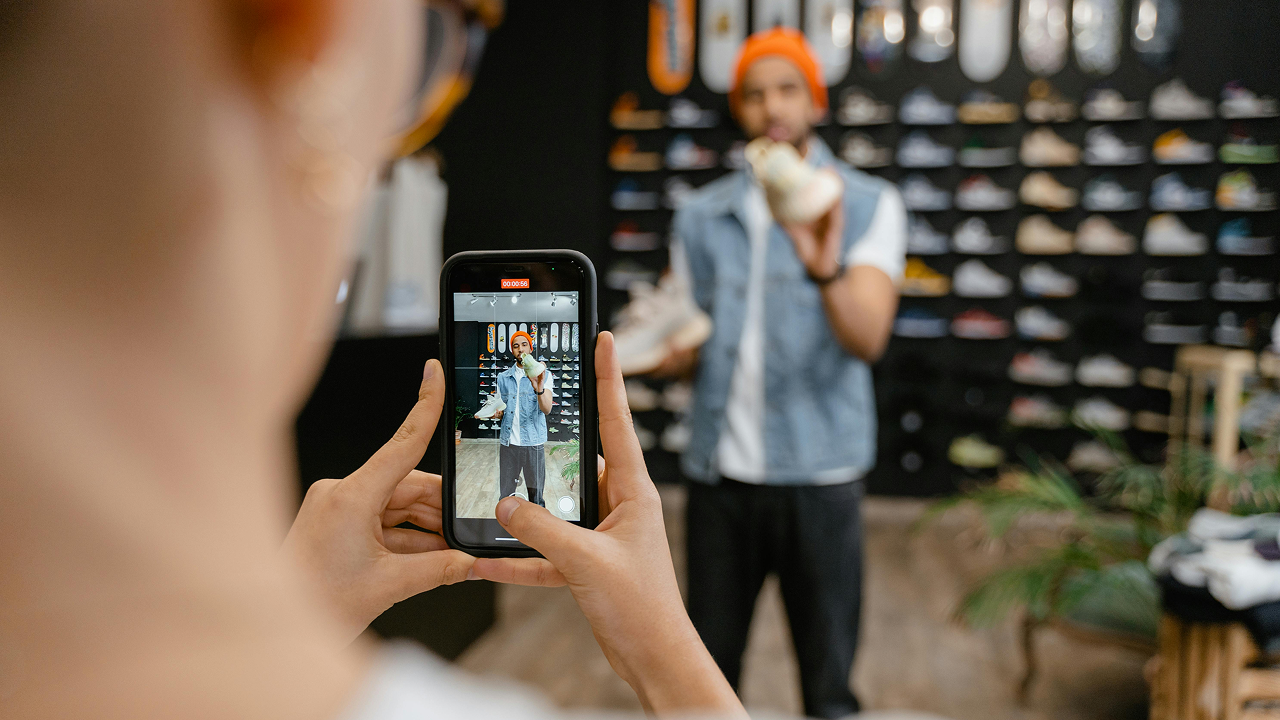
By Pamela Thompson April 22, 2025
Running a successful shoe store in today’s competitive retail environment means more than just having a stylish inventory. To keep customers happy and operations running smoothly, footwear retailers must rely on tools that save time, improve accuracy, and enhance the shopping experience. At the heart of this transformation is the modern point-of-sale (POS) system.
Far from being just a tool to complete transactions, a POS system plays a central role in almost every aspect of shoe store operations—from inventory tracking and employee management to customer engagement and financial reporting. The right POS solution can help shoe retailers simplify complex tasks and operate more efficiently.
Understanding the Basics of POS Systems
A POS system is the software and hardware used to manage sales transactions. It typically includes a touchscreen interface, barcode scanner, receipt printer, and cash drawer, along with software that records and tracks each transaction.
Modern POS platforms go far beyond the cash register. They combine checkout functionality with tools for inventory control, customer data management, real-time analytics, and multi-location coordination.
For shoe retailers, who often juggle seasonal trends, multiple sizes, and a wide variety of styles, a strong POS system can be the difference between chaotic operations and streamlined efficiency.
Why Footwear Retail Has Unique Operational Needs
Footwear retail is unlike many other retail sectors. Selling shoes involves managing hundreds of SKUs, tracking inventory by size and color, handling high return rates, and providing exceptional service in a visually appealing and well-organized store environment.
Each of these areas presents challenges that are difficult to manage manually or with outdated systems.
Managing Complex Inventory
Shoe stores must maintain inventory that varies by brand, style, size, and even width. A single shoe model may have dozens of individual product variations. Keeping accurate stock counts across all these combinations is nearly impossible without automation.
A good POS system simplifies this by enabling real-time tracking and automated restocking alerts. This ensures you never miss a sale due to size shortages and reduces the risk of overstocking unpopular items.
Handling High Return and Exchange Rates
Shoe purchases are deeply personal. Fit and comfort matter more than aesthetics alone. As a result, returns and exchanges are common. Whether customers buy the wrong size or change their minds after trying shoes at home, a POS system must support a quick and seamless return process.
POS systems designed for shoe stores often include easy refund processing and options to convert returns into store credits or exchanges, helping retain revenue and customer satisfaction.
Serving In-Store and Online Customers
With the rise of e-commerce, many shoe stores now operate both physical and digital storefronts. Customers may browse online and try in-store or vice versa. A modern POS system bridges the gap between online and in-person shopping by integrating with e-commerce platforms to create a unified shopping experience.
When systems are connected, it’s easier to offer services like click-and-collect, home delivery, or real-time stock checks across locations.
Streamlining Inventory Management with POS
One of the most valuable contributions of a POS system in a shoe store is efficient inventory control. Traditional methods like spreadsheets or manual counts leave room for error and consume valuable time.
Real-Time Stock Updates
Modern POS platforms automatically update inventory levels with every sale, return, or restock. Store staff and managers can instantly view what’s available, what’s running low, and what needs to be reordered. This accuracy reduces the risk of stockouts and improves order planning.
In multi-store operations, managers can transfer inventory between locations to balance supply based on demand, all within the same POS dashboard.
Demand Forecasting and Automated Reordering
POS systems with analytics features provide insights into product performance over time. Shoe retailers can track best-sellers, seasonal demand trends, and slow-moving inventory. With this data, they can forecast future sales and plan stock levels accordingly.
Some systems even allow automated purchase orders for frequently sold items, saving time and reducing stock management errors.
Barcode and Label Integration
Scanning barcodes at the checkout simplifies sales, reduces human error, and ensures faster service. POS systems often support the creation of custom labels with barcodes for unique or private-label shoes, improving shelf organization and tracking.
Enhancing the Customer Experience
In footwear retail, customer service can make or break a sale. A POS system enhances interactions by giving sales staff the tools and information they need to serve shoppers more efficiently.
Speeding Up Checkout
No customer enjoys standing in line, especially after spending time trying on shoes. A POS system speeds up checkout by processing payments quickly and accurately. With mobile POS terminals, staff can complete sales on the shop floor, reducing congestion at the register and improving customer flow.
Accepting multiple payment types—including contactless, mobile wallets, and Buy Now Pay Later (BNPL) services—also gives shoppers more flexibility and satisfaction.
Access to Purchase History and Preferences
POS systems that include customer relationship management (CRM) tools allow staff to access shopper profiles, purchase histories, and preferences. This makes it easier to recommend complementary products, remember sizing issues, or notify loyal customers when new stock arrives.
Loyalty programs can be built directly into the POS, rewarding repeat customers with points or discounts automatically, encouraging long-term engagement.
Personalized Service with Fewer Mistakes

With sizing being such a critical factor in footwear, having access to purchase and return history helps prevent repeat problems. Staff can use the POS system to note customer preferences, avoid previous sizing issues, and recommend styles that fit better.
This creates a more tailored experience while reducing returns caused by poor sizing or customer confusion.
Simplifying Returns and Exchanges
Returns and exchanges are a natural part of selling shoes, but they can be stressful for both customers and staff. A POS system simplifies the process by maintaining detailed transaction records and allowing quick verification of purchase details.
Fast Refund Processing
POS systems record payment methods and transaction details, making it easier to refund the original payment or issue store credit. The customer doesn’t need to provide a paper receipt, as the system already tracks their order.
This efficiency enhances customer satisfaction and boosts trust in the store’s return policy.
Easy Product Swaps
If a customer wants to exchange one size for another, the system can process the return and new sale in a single workflow. Inventory is updated in real time, and the transaction is closed quickly, reducing the time staff spend on administration.
Staff Management and Performance Tracking
Shoe store operations depend on employees—from cashiers to floor sales staff—delivering quality service. A POS system helps retailers manage teams more effectively by offering tools that track sales, monitor performance, and support training efforts.
Sales by Employee Tracking
Many systems allow each transaction to be linked to a specific employee. This helps managers see who is excelling in sales and who may need additional coaching. Recognizing top performers can boost morale and encourage healthy competition among the team.
Shift Scheduling and Time Clocks
Some POS systems include workforce management features like digital time tracking and scheduling. This simplifies payroll preparation and ensures compliance with labor laws.
Managers can forecast staffing needs based on foot traffic and sales trends, leading to better coverage during peak hours and less downtime during slow periods.
Financial and Operational Reporting
Running a shoe store is part passion, part business. Having real-time access to operational data allows owners and managers to make informed decisions about pricing, staffing, marketing, and expansion.
Sales Reports
POS systems generate detailed sales reports by day, week, product, or location. Managers can track which styles are performing best, what price points are most popular, and which days drive the most revenue.
With this data, retailers can fine-tune promotions, markdowns, and seasonal inventory planning.
Profit Margins and Expense Tracking
Understanding profit margins is key to sustainability. Some systems offer profit calculators, cost tracking, and gross margin reporting. This helps business owners set better pricing strategies and control expenses.
Tax and Accounting Integration
A modern POS system often integrates with accounting software, streamlining tax filing and financial reporting. It ensures that sales tax is applied correctly and automatically logs income, refunds, and discounts.
This integration eliminates hours of manual data entry and reduces errors during tax season.
Supporting E-Commerce and Omnichannel Sales
Footwear retailers can’t rely on foot traffic alone. With shoppers browsing on social media, buying on websites, and visiting stores, a POS system must accommodate omnichannel behavior.
Inventory Synchronization
When your POS and e-commerce systems are linked, inventory is automatically updated across all channels. A shoe sold online instantly reflects in-store availability, reducing double selling and order cancellations.
This improves accuracy and allows for services like store pickup and local delivery.
Centralized Customer Accounts
Unified POS systems allow customers to maintain a single account across online and in-store purchases. Loyalty rewards, order history, and preferences follow them across channels, making it easier to serve them consistently.
Cross-Channel Promotions
POS integrations enable retailers to run promotions that work both online and offline. For example, a discount emailed to a customer can be redeemed in-store, or a QR code from a printed flyer can apply a discount at checkout on the website.
This flexibility enhances marketing reach and customer engagement.
Future Trends and Scalability

As the retail landscape continues to evolve, shoe stores need payment and operations systems that can grow with them. Choosing a POS platform that supports future expansion helps retailers stay competitive.
Support for Pop-Ups and Events
Mobile POS systems allow shoe retailers to sell at events, pop-ups, or expos using portable devices. These sales sync with the main inventory and reporting system, maintaining consistent records and real-time insights.
Expansion to New Locations
POS platforms that support multi-location operations make it easier to open new branches or franchise units. Managers can view sales, inventory, and staff activity across all stores from one centralized dashboard.
Integration with AI and Analytics
Some POS systems are starting to offer predictive analytics and AI tools. These features help forecast customer behavior, optimize pricing strategies, and personalize promotions—all using historical data.
Conclusion
In the fast-moving world of footwear retail, managing operations efficiently is essential to success. The modern POS system is no longer just a transaction tool—it’s a comprehensive platform that supports inventory management, customer service, staff performance, reporting, and omnichannel selling.
By adopting a POS system tailored to the needs of shoe stores, retailers can streamline operations, increase profitability, and deliver better shopping experiences. Whether managing a single boutique or overseeing a nationwide brand, the right POS system creates a solid foundation for long-term growth and customer satisfaction.
Leave a Reply